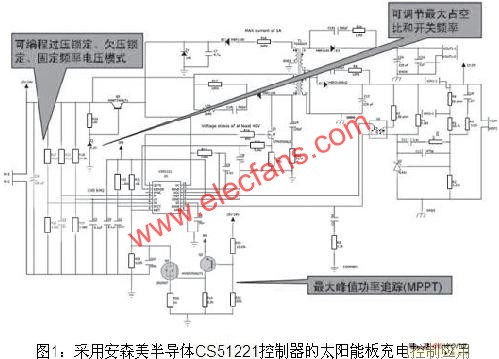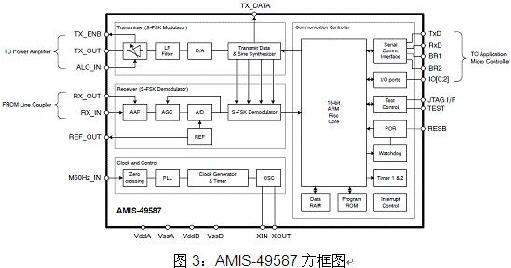Several market research institutions predict that by 2030, the share of renewable energy (such as wind power and solar power) in global energy consumption will increase significantly. Advocating energy conservation, emission reduction, and green development has put forward new requirements for all industries. Energy-saving design that caters to the era of low-carbon economy has become an important manifestation of the competitiveness of energy companies and electronic products.
Market opportunities and challenges The development of renewable energy is the general trend. Solar power and wind power are part of the smart grid and belong to the category of distributed power generation. Promoting the development of smart grids can bring many advantages, such as the use of two-way communication to achieve demand response management, alleviate power peaks, quickly find faults, and avoid blackouts, thereby achieving higher energy efficiency, reliability, and safety; intelligently integrating new alternative Energy, and provide electricity for electric and hybrid vehicles; better adjust energy supply and demand, use power plants and power grids more efficiently, reduce carbon emissions; provide dynamic rate tables to help customers optimize total electricity consumption and electricity expenses, Improve customer service; and remote meter reading and remote power on and off can save labor costs and improve operational efficiency.
Under the consensus of promoting sustainable development, China is currently vigorously developing solar energy, wind energy and other industries with promising prospects. Among them, the technology in the field of solar energy has become increasingly mature, solar power generation has been greatly developed, and solar street lighting has become more and more popular. In addition, in order to introduce a new generation of smart grids and improve the power infrastructure, the Chinese government has set a grand goal of investing 4 trillion yuan by 2020. The concept of "Strong & Smart Grid" has been introduced at the Shanghai World Expo Show.
However, while developing renewable energy and upgrading the existing power grid, it also faces many challenges. For the semiconductor industry, the biggest challenge is energy conversion, because the key to developing renewable energy is to optimize energy efficiency. Taking solar-powered LED street lighting as an example, this application requires efficient and reliable solar panel charge controllers, and key devices such as LED drivers. The demand is considerable. The smart grid also needs many electronic components from power generation, power distribution and field area network to smart meter communication and home area network. These include power factor controllers, AC-DC (DC-DC) and DC-DC (DC-DC) controllers, voltage regulators, MOSFETs, triacs (TRIAC), power line carrier modems, and filtering , Input / output (I / O) and data protection, line driver and signal amplifier, LCD backlight driver, EEPROM memory and smart card interface, etc.
Examples of energy-efficient solutions for smart grids
1. Scheme to improve the energy efficiency of the solar panel's photoelectric conversion
In recent years, the industry has paid more and more attention to street lighting using renewable clean energy solar energy. For solar street lights, it is very important to improve the photoelectric conversion energy efficiency of solar panels. The voltage-current (VI) characteristic curve of a solar panel exhibits non-linearity and variability, and it is very difficult to obtain the maximum amount of electrical energy from it. This requires a solar LED street lamp charge controller and other related electronic circuits (usually implemented with a microcontroller) as much as possible to use effective control methods to improve energy efficiency.
ON Semiconductor's CS51221 enhanced voltage mode PWM controller is a device that can improve the energy efficiency of solar panels. It can control the solar panel battery charging, support the maximum peak power tracking (MPPT) function, provide compensation for the changing VI characteristic curve of the solar battery, optimize the power output of the solar battery, improve energy efficiency, and charge the battery to the optimized power.
In the application circuit, it is necessary to select a suitable topology for CS51221. The topology should be able to reduce the solar panel output voltage to 12V in the case of one battery, and can be easily modified in the case of two or more batteries, supporting boost to 24V. CS51221 itself can be configured as forward, flyback or boost topology. In the reference design for solar panel charging control applications, ON Semiconductor chose the flyback topology.
In application, by dynamically adjusting the current limit at the ISET pin, the maximum peak power tracking function is realized. Once the input voltage drops pulse by pulse, the current limit will be reduced until the input voltage is restored. This method does not require the use of expensive microcontrollers. The charge controller realized in this way will find the peak power point and dynamically adjust it to conform to the constantly changing power supply characteristics. In fact, through the use of maximum peak power tracking technology, 30% more charge can be transferred from the solar panel to the battery, so that the solar street light system can use smaller solar panels, resulting in significant cost efficiency. Figure 1 is a schematic diagram of the solar panel charging control application using ON Semiconductor CS51221 controller.

In addition, ON Semiconductor's NCP3066 constant current buck regulator can also be used for LED driving applications of solar street lights, providing the power and light output required by the system, and has extremely high energy efficiency.
2. Smart grid solution
Today's power grid has become larger, safer and has higher energy efficiency than before, but its degree of intelligence is still low, so smart grid is an important development trend today.
ON Semiconductor has invested and is investing heavily in smart grid research and development, covering all product lines, including power conversion analog ICs, signal ICs (such as low-noise amplifiers), power discrete devices (high-voltage MOSFETs, IGBTs, rectifiers), mixed-signal ICs (smart cards Interface IC, clock and timing IC), communication IC (such as PLC modem), logic IC, memory IC, and standard discrete devices (protection, filters).
The core of the smart grid is the smart meter. With the help of the smart meter, the power company can know how much energy the user uses at a time, so that they can provide differentiated pricing, and help the user optimize their overall energy consumption and electricity expenditure.
ON Semiconductor's solutions for smart meters include a series of standard products, special standard products (ASSP) and application specific integrated circuits (ASIC), which can provide four basic functions of smart meters, including: power / power management, metering, storage and Communication. Figure 2 is a smart meter application composed of a variety of ON Semiconductor devices (green part in the figure).

The fully integrated power line carrier (PLC) modem AMIS-49587 is a key device in the application of Figure 2. The device can provide a high-integration, standard-compliant low-power PLC solution, which can be used in intelligent electric power automatic meter reading and management, street lighting control, intelligent power plug (power plug) and building automation and other fields. AMIS-49587 uses ON Semiconductor's mixed-signal technology to integrate analog modem front-end and digital post-processing functions in an integrated circuit.
AMIS-49587 conforms to the IEC1334 standard, which helps simplify design, reduce development and application costs, and accelerate the time-to-market process. The device is based on the ARM7TDMI processor core and contains the physical interface transceiver (PHY) and media access controller (MAC) layer, and most competing solutions require complex embedded software to perform the same functions as AMIS-49587. The device uses spread-spectrum frequency shift keying (S-FSK) modulation technology, combined with precise filtering, to provide reliable low data rate communication for long-distance power lines, and a half-duplex adjustable communication rate of 2,400 bps (baud) . The low operating frequency of less than 20 kilohertz (kHz) is equipped with an automatic repeater (repeater) function, making communication more reliable, and the communication error is lower than other and existing solutions. Figure 3 is a block diagram of AMIS-49587.

Summary Driven by government energy conservation regulations and various energy efficiency programs, the renewable energy and emerging smart meter markets have huge growth potential. In this process, semiconductor devices will shoulder a heavy responsibility with their comprehensive advantages of low energy consumption, high energy efficiency, high reliability, high speed, high intelligence, and small size.
ON Semiconductor has a broad product lineup based on advanced technology and huge production scale to meet the market opportunities and challenges of smart grid, including standard products, ASSP and ASIC. Technically covers everything from extremely high voltage (700 V) technology (used to develop analog power conversion ICs in power / power management) to submicron 0.11 um CMOS technology (integrated microcontroller core and mixed signal on a single silicon chip Analog circuit), and high-voltage MOSFET, IGBT and rectifier.
Waveguide Attenuator,Adjustable Rf Attenuator,Waveguide Variable Attenuator,High Power Variable Attenuator
Chengdu Zysen Technology Co., Ltd. , https://www.zysenmw.com